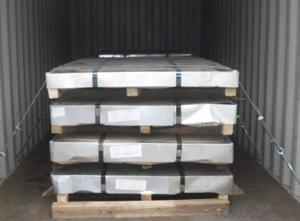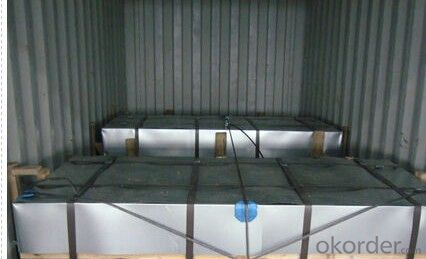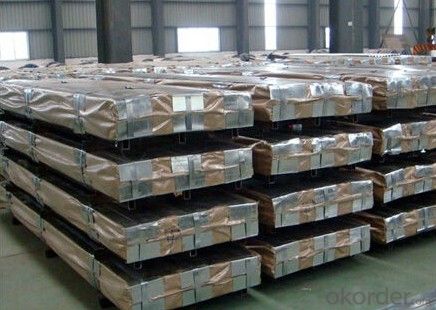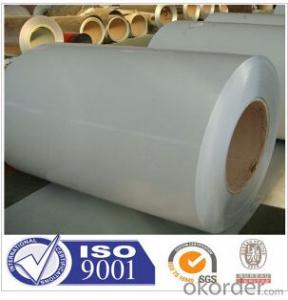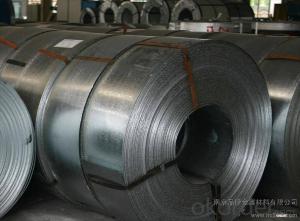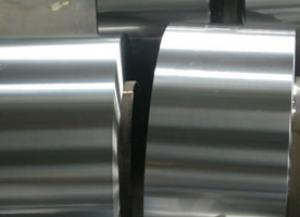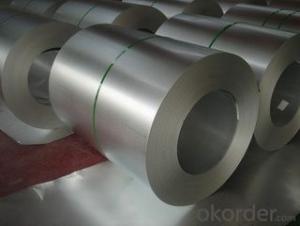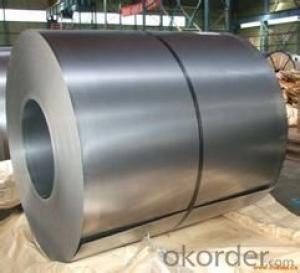EXCELLENT COLD ROLLED STEEL SHEET
- Loading Port:
- China Main Port
- Payment Terms:
- TT OR LC
- Min Order Qty:
- -
- Supply Capability:
- -
OKorder Service Pledge
Quality Product, Order Online Tracking, Timely Delivery
OKorder Financial Service
Credit Rating, Credit Services, Credit Purchasing
You Might Also Like
| standard | AISI, ASTM, DIN, GB, JIS |
EXCELLENT COLD ROLLED STEEL SHEET
Steel Grade | Q195/Q195L/st12/dc01/spcc |
| Thickness | 0.15-1.5mm |
| Width | 500-914mm |
| Length | coil |
| hardness | t2-t5 |
| coating | 1.1/1.1;2.2/2.2;2.8/2.8, 2.8/5.6, 5.6/5.6, |
| Type of payment | T/T, L/C |
| Packing | As per customer's requirement |
| Delivery | 30days after contract |
| Price | FOB&CIF |
| MOQ | 20Tons |
- Q: What are the different types of steel coil loading and unloading devices?
- There are several different types of steel coil loading and unloading devices, including coil lifters, coil hooks, coil tongs, coil grabs, coil c-hooks, coil fork attachments, and coil transfer cars. These devices are used to safely and efficiently handle steel coils during transportation and storage processes.
- Q: What are the factors affecting the strength of steel coils?
- There are several factors that can affect the strength of steel coils. 1. Steel Grade: The type and quality of the steel used in the coils plays a significant role in determining their strength. Different steel grades have varying levels of carbon content, alloying elements, and heat treatment processes, which can impact the overall strength and durability of the coils. 2. Manufacturing Process: The way in which the steel coils are manufactured can also affect their strength. Factors such as the temperature and duration of the heat treatment, the rolling and annealing processes, and the level of cold working can all influence the final strength of the coils. 3. Thickness and Width: The thickness and width of the steel coils can affect their strength. Thicker coils tend to be stronger and more resistant to deformation, while wider coils may exhibit variations in strength across their surface. 4. Surface Quality: The condition of the coil's surface, including any imperfections or defects, can influence its strength. Surface defects such as scratches, pits, or corrosion can act as stress concentration points, reducing the overall strength of the coil. 5. Storage and Handling: The way in which the coils are stored and handled can impact their strength. Factors such as exposure to moisture, extreme temperatures, or improper stacking and transportation can lead to deformation or damage, decreasing the strength of the coils. 6. Environmental Conditions: Environmental factors such as humidity, temperature, and exposure to corrosive agents can also affect the strength of steel coils. In harsh environments, the coils may experience accelerated corrosion, leading to a decrease in their strength over time. It is important to consider these factors when selecting and utilizing steel coils to ensure that they meet the required strength specifications for the intended application.
- Q: Recently I bought Bleach's Grimmjow's replica sword from swordsswords and I was wondering how strong is 440 steel when used for a 21 inch blade? Can it cut effectively? Is it dangerous?
- 440 is stainless steel, and isn't designed for functional swords. Carbon steel blades are. I'd say that if you're looking for a functional sword, forget about this one. It's probably a wall-hanger. Most swords today are.
- Q: How are steel coils inspected for dimensional accuracy after processing?
- Steel coils are inspected for dimensional accuracy after processing using various methods, such as manual measurement with precision tools, laser scanning technology, or automated vision systems. These inspection methods ensure that the dimensions of the steel coils meet the required specifications and tolerances, ensuring their quality and suitability for the intended applications.
- Q: How are steel coils used in the manufacturing of oil and gas equipment?
- Steel coils are used in the manufacturing of oil and gas equipment to create various components such as pipes, tanks, and pressure vessels. These coils are shaped, cut, and welded to form the required structures, ensuring strength, durability, and resistance to extreme conditions encountered in the oil and gas industry.
- Q: What are the challenges in coil blanking?
- In order to achieve efficient and accurate production, coil blanking, a process used to cut flat metal sheets from coiled stock, must tackle several challenges. Some of the key challenges include: 1. Material variations: Coiled stock can have variations in thickness, width, and surface quality, which can impact the cutting process and result in inconsistent blanks. To ensure consistent quality and dimensional accuracy, it is crucial to carefully select and control the material. 2. Coil set and crossbow: Coiled stock often has inherent shape imperfections like coil set (longitudinal curvature) and crossbow (transverse curvature), which can cause alignment issues during cutting. Minimizing these imperfections requires the use of specialized equipment and techniques, such as straighteners and leveling systems. 3. Coil edge condition: The edges of coiled stock can have burrs, waves, or irregularities, which can affect the quality and precision of the cut blanks. Employing proper edge conditioning techniques, like deburring or edge trimming, is necessary to ensure clean and straight edges. 4. Slitting and shearing forces: The forces exerted during coil blanking can induce stresses and strains in the material, potentially leading to deformation or springback. To minimize these effects and maintain dimensional accuracy, careful consideration of slitting and shearing forces, along with proper tooling design and machine settings, is necessary. 5. Scrap and material waste: Coil blanking can generate significant amounts of scrap material, especially during setup and adjustment phases. Managing scrap and reducing material waste is crucial to optimize production efficiency and minimize costs. Efficient nesting algorithms and real-time monitoring systems can help achieve this. 6. Automation and productivity: Due to market demands, coil blanking often requires high-speed and high-volume production. Enhancing productivity can be achieved through the implementation of automation systems, such as robotic material handling and advanced control systems. However, integrating and synchronizing these components with the cutting process requires careful planning and system integration expertise. Overall, addressing these challenges in coil blanking necessitates proper material selection, advanced equipment, specialized techniques, and efficient process control. By overcoming these challenges, manufacturers can achieve consistent quality, dimensional accuracy, and productivity in coil blanking operations.
- Q: What are the different methods of slitting steel coils?
- Different methods exist for slitting steel coils, each with unique advantages and limitations. Several common methods include: 1. Rotary Shear Slitting: By employing rotating knives, this method cuts steel coils into narrower strips. It is versatile and efficient, enabling high-speed production and precise slitting. Rotary shear slitting is commonly utilized for thinner gauge materials. 2. Looping Pit Slitting: Steel coils pass through a looping pit in this method, where they are guided and tensioned before being slit. It is suitable for thicker gauge materials and ensures good edge quality. Looping pit slitting accommodates higher coil speeds and heavier coils. 3. Drag Slitting: In this method, the steel coil is dragged over a stationary blade or set of blades to perform the slitting. It is particularly beneficial for difficult-to-slit materials like high-strength steels. Drag slitting yields excellent edge quality and is often utilized for precision slitting applications. 4. Crush Slitting: Pressure is applied to the steel coil in crush slitting to crush and separate it into narrower strips. This cost-effective method is suitable for lower gauge materials but may result in slightly rougher edge quality compared to other methods. 5. Laser Slitting: Laser slitting employs a focused laser beam to cut through the steel coil. It is a highly precise method that offers excellent edge quality and minimal distortion. Laser slitting is commonly employed for high-value and specialty materials. Each method possesses distinct advantages and is suitable for specific applications and material types. The choice of slitting method depends on factors such as material thickness, desired edge quality, production speed requirements, and budget considerations.
- Q: Why cold rolled stainless steel sheet is lower than cold rolled stainless steel coil?
- Kaiping is the flat coil set into common size. A negative tolerance is the actual thickness of the plate, not the thickness of the mark.
- Q: What are the potential dangers of handling steel coils?
- The potential dangers of handling steel coils include the risk of injuries due to their heavy weight and sharp edges, the possibility of crushing accidents or being struck by falling coils, and the potential for back or muscle strain from manually lifting or moving the coils.
- Q: How are steel coils used in the production of metal bridges?
- Steel coils are an essential component in the production of metal bridges due to their versatility, strength, and durability. These coils are typically made from high-quality steel alloys, which provide the necessary structural integrity required for constructing bridges. The first step in using steel coils for bridge production is processing them through a series of manufacturing techniques. The coils are uncoiled and straightened to remove any distortions or bends. Then, they are cut into precise lengths according to the bridge's design specifications. Once the steel coils have been processed, they are transformed into various structural components used in bridge construction. These components include beams, girders, trusses, and plates. Beams and girders are typically used for the main support structure of the bridge, while trusses provide additional support and stability. Plates are used for the bridge deck, providing the surface on which vehicles and pedestrians travel. Steel coils also play a crucial role in the fabrication of bridge connections and joints. These connections are essential for transmitting loads and forces throughout the bridge structure, ensuring its stability and safety. Steel coils are used to create various connection elements such as bolts, nuts, washers, and welded sections. Furthermore, steel coils are commonly employed in the production of bridge reinforcements. Reinforcing steel bars, also known as rebars, are manufactured from steel coils. These rebars are used to strengthen concrete elements within the bridge, such as columns, piers, and abutments, enhancing their load-bearing capacity and resistance to bending and tension. In addition to their structural applications, steel coils are also used for protective coatings on metal bridges. Coils can be coated with specialized materials such as zinc, epoxy, or paint to prevent corrosion and increase the lifespan of the bridge. These coatings help to maintain the structural integrity of the bridge, especially in harsh environments where exposure to moisture, chemicals, and weathering factors is high. Overall, steel coils serve as the backbone of metal bridge production. They are transformed into various structural components, connections, reinforcements, and protective coatings that ensure the strength, durability, and longevity of the bridge.
Send your message to us
EXCELLENT COLD ROLLED STEEL SHEET
- Loading Port:
- China Main Port
- Payment Terms:
- TT OR LC
- Min Order Qty:
- -
- Supply Capability:
- -
OKorder Service Pledge
Quality Product, Order Online Tracking, Timely Delivery
OKorder Financial Service
Credit Rating, Credit Services, Credit Purchasing
Similar products
Hot products
Hot Searches
Related keywords
